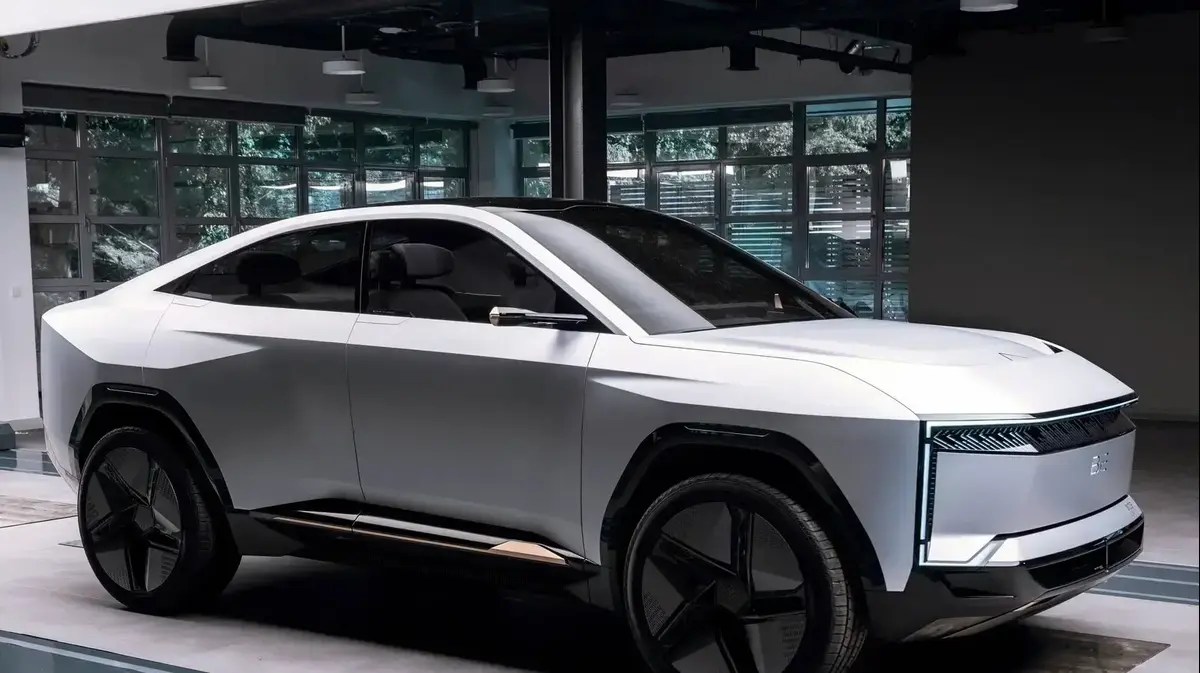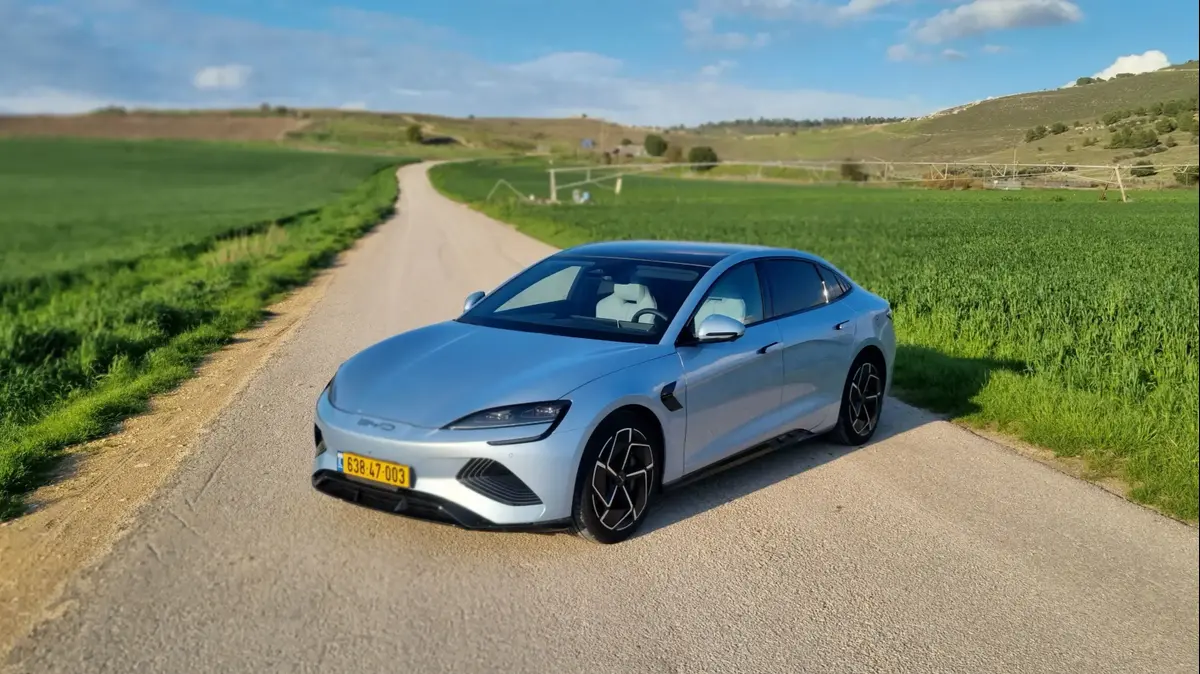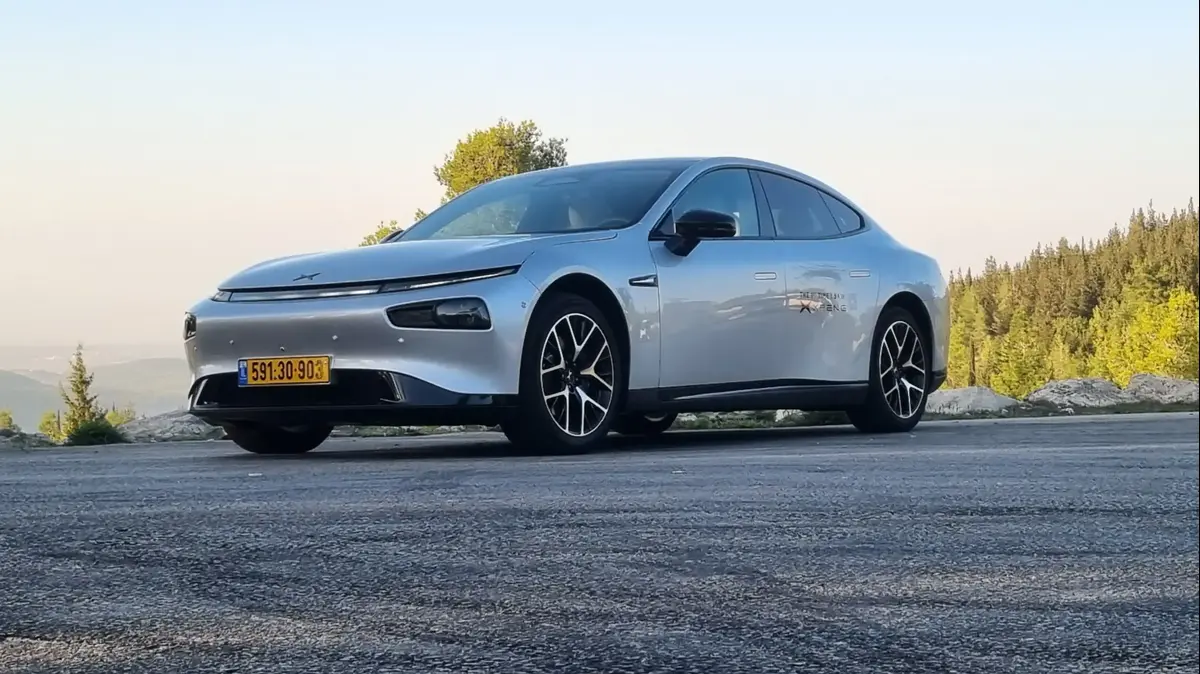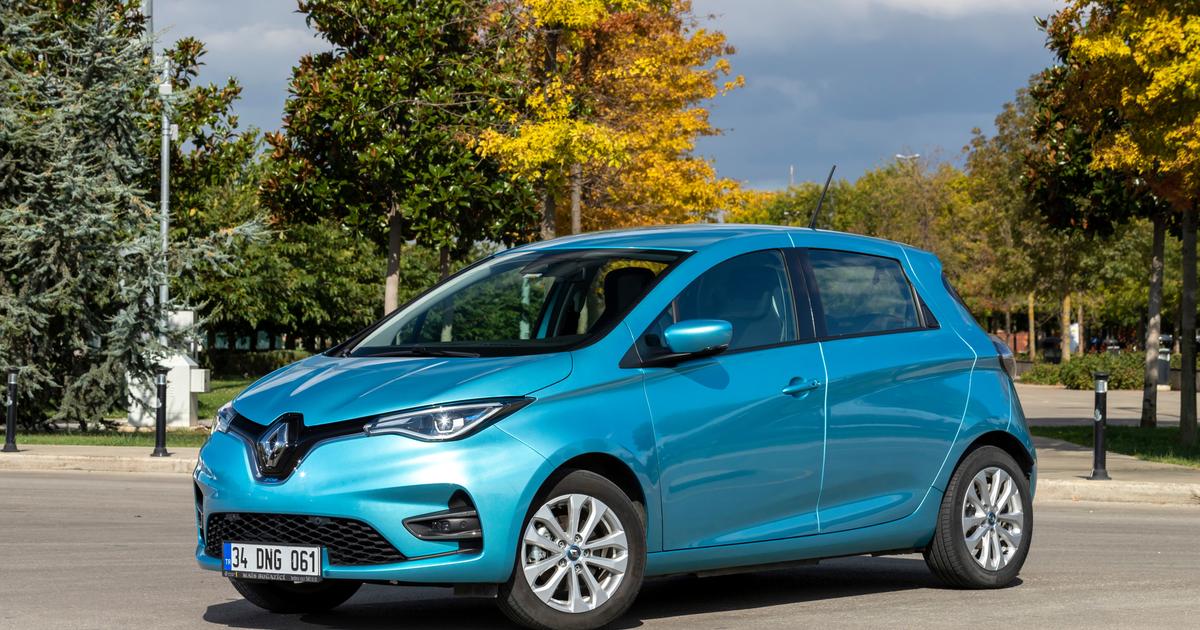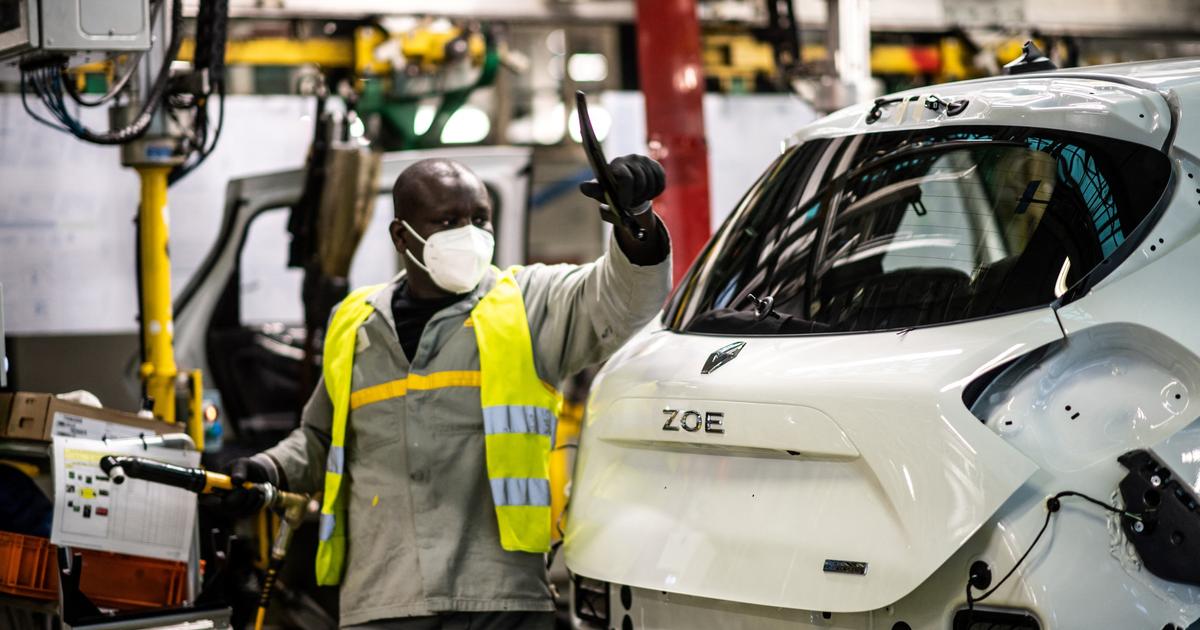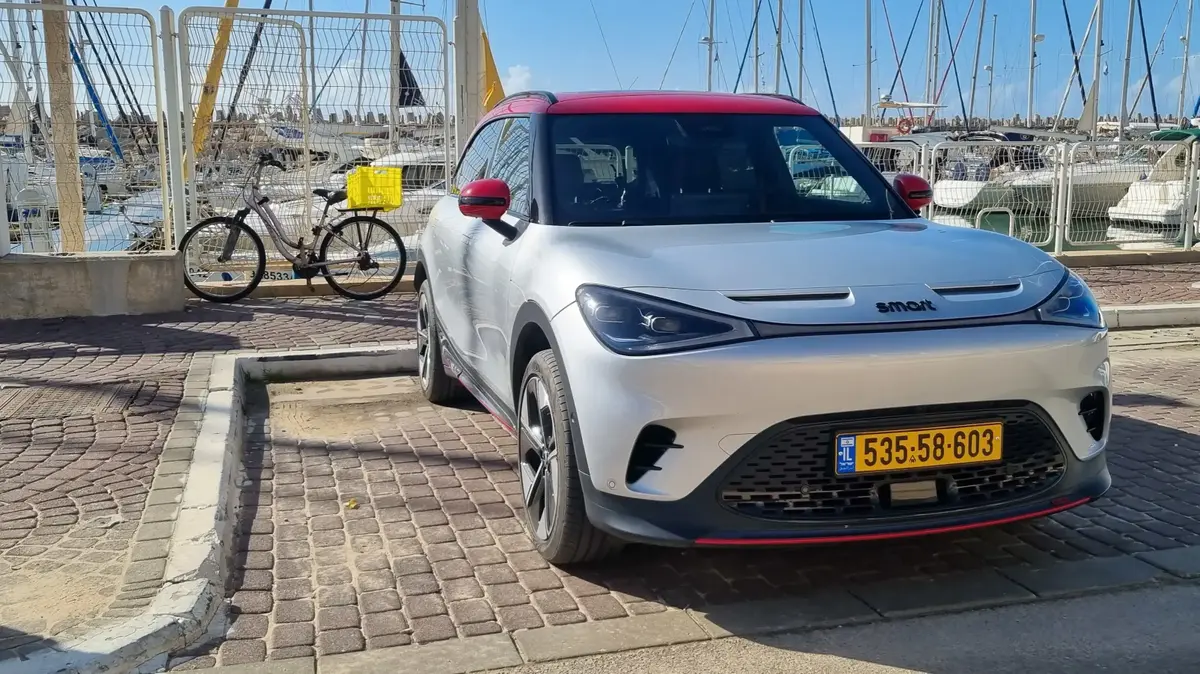Mahindra BE Concept, why is it here?
Read to the end (photo: manufacturer's website)
A brief announcement in 2016 in Autocar - the world's oldest motoring press - blandly told that Volvo was cutting the UK market for the S60 Cross Country due to disappointing sales figures.
And "disappointing" is a very polite British understatement to describe the fact that 34 units were sold there during two years of marketing the model.
The British market was not alone in this story - in the United States in 2015 only 287 units of this raised sedan and double drive were sold, in 2016 the number was 563 units, 312 the following year and 273 in 2018, the last marketing year of the model.
Does it sound like a hysterical bonanza compared to the British?
So just to put things in proportion - the Volvo S60 as a model family sold 24,124 units in 2015 in the US.
The conclusion is quite simple - the Volvo S60 Cross Country as a concept, as a model, as an idea was a definite failure.
In the same year, in 2016, Volvo presents the 40.2 concept - presenting and immediately putting the car away.
Look at its picture below, and you will understand that it was a temporary breakdown and this car is back, but not as a Volvo.
And her mention here is not accidental.
Wait, isn't that Polestar?
No, it's not (photo: manufacturer's website)
Years have passed, and there's a good chance that automakers around the world have hung a picture of this Volvo S60 Cross Country in every room where the new model thinking teams sat with a clear and explicit warning "Whoever proposes the idea of a tall sedan, or even thinks about it - should pack his things and will go home."
Years passed and in general, with the exception of the American market which still showed signs of affection for the sedan car and some markets in developing or just backward countries, where a sedan car is "respectable" - the world gradually turned its back on the classic three-box configuration in favor of its new love - crossovers.
More in Walla!
Virtual reality therapy: a treatment for coping with anxiety
in collaboration with zap doctors
Volvo S60 Cross Country, have you never heard of it?
Rightfully so... (Photo: Manufacturer's website)
But 7 years after the S60 episode on the heels, something seems to be changing in the automotive world - Toyota in Japan, the Swedish-Chinese Polestar and the French Citroen each have a tall sedan - one that seeks to bring the advantages of a sedan and combine it with the high driving position that everyone seems to be looking for today .
And just before we get to know these cars, let's talk a little about the historical and contemporary advantages of the sedan configuration.
At a time when they were still called "off-road vehicles" or even SUVs, before they became the bulky station wagons and hatchbacks that they are today - these vehicles that were heavier and more cumbersome than normal cars had high fuel consumption due to their weight, aerodynamics of a refrigerator due to the design, shocking road behavior of swaying on Long travel shocks and springs, and very limited safety in the event they roll over following this lead.
Toyota Crown, the flagship is on its heels (photo: manufacturer's website)
A sedan, on the other hand, weighed less, was cheaper to buy and maintain, handled better and was therefore less likely to be involved in an accident and, when one did occur, offered better protection for its passengers.
More bonuses?
It was economical in fuel thanks to the structure that allows the air through which it moves to "slide" on top of the chassis and not create resistances and an advantage that sedans maintain to this day - the possibility of producing a passenger compartment that is detached from the trunk and is a space that stands on its own - a bonus when it comes to noise insulation.
There was a very good reason that if you wanted to get somewhere in a real luxury car from the worlds of luxury between Cadillac and Mercedes to Bentley and Rolls Royce - let us guess, it wasn't a station wagon or an SUV or even similar.
Citroen C4X, they added a buttock to the crossover and turned it into a sedan (Photo: Ronen Toppelberg)
So what actually happened?
We can begin to tell about the rise of off-road vehicles, their transition to what is known as "Jeeps", those that retained certain off-road capabilities but combined them with civilized road users and over time became crossovers - those hybrid creatures, neither meat nor milk, the motor equivalent of a mix of ingredients and a Jerusalem mix On wheels where it is not clear where the border of good taste passes between reality, and marketing mumbo jumbo that is convinced that if you put black plastic wheel arches and a silver plastic bumper bottom - your family Mazda will look very tough.
But with success in the sales halls it was hard to argue, this is what the customers wanted, this is what the manufacturers sold to them - until the reality arrives - the one that brings together the growing movement towards the electric and those who have not yet put on full power, so at least in the direction of saving fuel and emitting pollutants - And guess who does it less well?
That's right, any car that isn't a sedan or similar.
At the top of the electric range - a sedan and so are almost all the top ten of the leaders in the field (photo: manufacturer's website)
And here is one example of this story from where economy is king and efficiency is queen - the range of an electric car.
These are some of the electric cars with the longest range in the world: Lucid Air, Mercedes EQS, Tesla Model S, Mercedes EQE, Hyundai Ioniq 6, Tesla Model 3, BMW i7 What do they all have in common?
They are sedans.
Only at this stage will we reach the areas of cars that can hardly be defined as "crossovers" such as Tesla Model Y and Model X, Kia EV6 and more (all of which in a darkening silhouette are not fundamentally different from a Prius in profile).
True, you can force the GMC Hummer EV in - only it weighs more than 4 tons and has a battery that can last 4 electric cars...
Hummer EV - yes electric, not economical (photo: manufacturer website, manufacturer)
But in recent years something is changing in the automotive world and it's happening in completely different parts of the world, from completely different manufacturers in their DNA, in different segments - but with one common denominator - the need to be efficient and still attractive to an audience that has seen everything and is looking for the other.
And so, in 2019, Polestar, once the sports division of Volvo and today an electric manufacturer under the wings of the Chinese Geely (the owner of Volvo), presents the Polestar 2 - a car with a configuration that looks exactly like a raised sedan that is based on a crossover, in this case the XC40.
And if this look looks familiar to you, then yes, it is simply the production version of the same Volvo 40.2 concept that was shelved and simply put on hold until a more suitable time to go on the market.
Now get a segment - put aside for a second the long range version of the Polestar 2 with 546 km, let's take apples against apples - the electric Volvo XC40 in the version with the dual engine and the Polestar 2 in the corresponding dual engine version - remind you - same platform, same engines in power Same combined 408 hp (407 in Volvo), same torque of 67.3 kgm, same 78 kWh battery but the range?
In Polestar it is 465 km, in Volvo 414 km - that's 11% more, a very big gap in an electric car, still not convinced?
So here's another little thing, the Polestar does all this while weighing 158 kg more.
Polestar 2, living comfortably between the worlds (Photo: Ronan Toppelberg)
Three years ahead, at the end of June 2022, Citroën presents the C4X, the one that just landed with us - the Konz-Patent simply took the compact crossover C4 and added a trunk to it in order to offer more utility and more attractiveness to the markets of India, Africa and South America - The growth engines indicated by the manufacturer.
And since this is the very same lady with a hump change, we did the little exercise of comparing the versions.
The difference here is much less significant than in the Volvo Polestar - 5 km more in range for the sedan version, which also according to the manufacturer is due to the more aerodynamic configuration of the C4X.
And a month later, in July 2022, on the completely other side of the world, Toyota shakes the heads of the Sips when it takes one of the oldest names in its arsenal of models - the Crown (Crown) and turns it from its most senior and most luxurious sedan into a huge sedan with 4.93 meters from bumper to bumper, base 2.85 meter wheels - so far everything is still fine, what you would expect from a manufacturer's flagship car.
But it is also raised very high with a roof at 1.54 meters - a single cm less than the CHR for the sake of proportion.
Even in the case of the Crown, the choice to go for the raised sedan comes to meet two requirements that are seemingly contradictory - how to leave the flagship car, From the veterans of Toyota's model names that have been around since 1955 is relevant even in an age where everyone wants crossovers that sit high? Toyota's answer was to design a sedan that looks very different and still puts the driver in the eye line with all those tall cars popping up around.
The Chinese Baojun RC 6, for markets that like sedans, but want to sit high (photo: manufacturer's website)
So where is this trend going?
Don't ask me, me and fashion are two parallel lines that will never meet.
First of all, there is no fear that this configuration will take over the world.
But in a sober assessment going forward, despite the western examples we have presented here, the best chance for this subgenre is precisely in China and India - the former is a growing automobile powerhouse, the latter is warming up on the lines - where the desire to continue driving a "fancy, fair and respectable" car on the one hand and the affection meet For the high sitting position, on the other hand.
And already today you can find such examples as the Bujon RC in China alongside other examples similar to it and at the Indian Mahindra the BE concept car from the opening.
Both take the familiar sedan car and simply add a few centimeters to its height.
And just to wrap it up for you with food for thought about numbers, reality and imagination - the 1987 Subaru Leona had 17 cm of ground clearance - anyone want to guess what the current Kia Sportage's ground clearance is? I rest my case as they say, if anyone thinks we invented it Something new, to think again.
vehicle
car news
Tags
Crossover
Sedan
Jeep
electric car
Polestar
Citroen
Toyota

